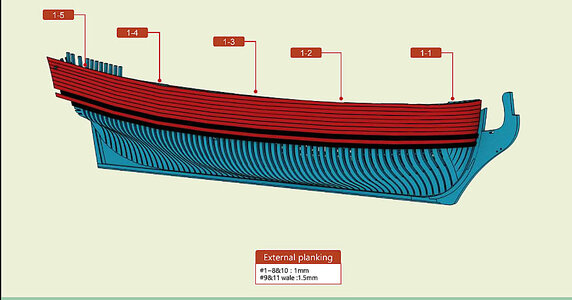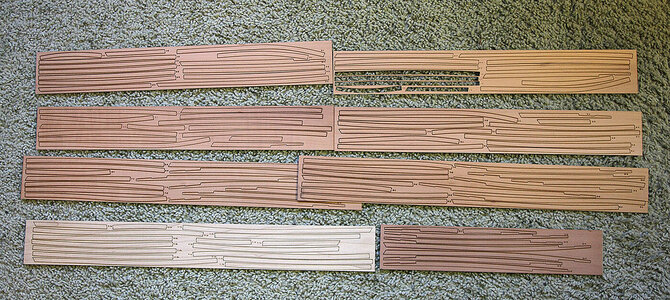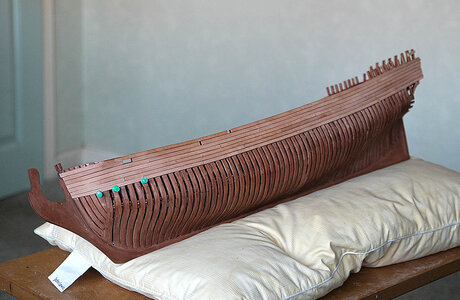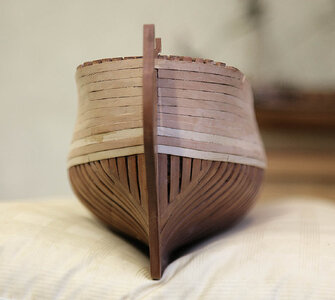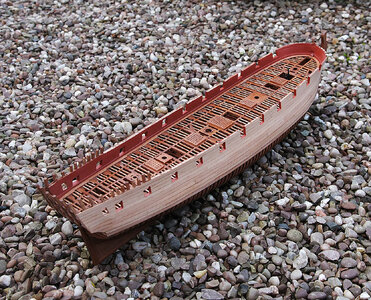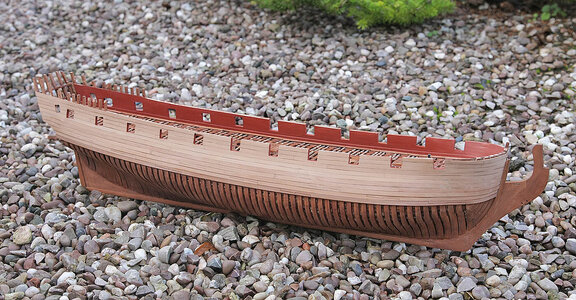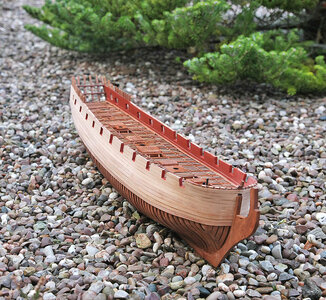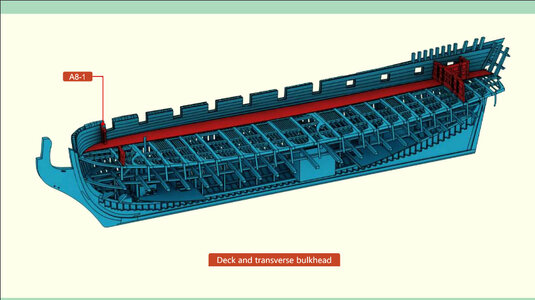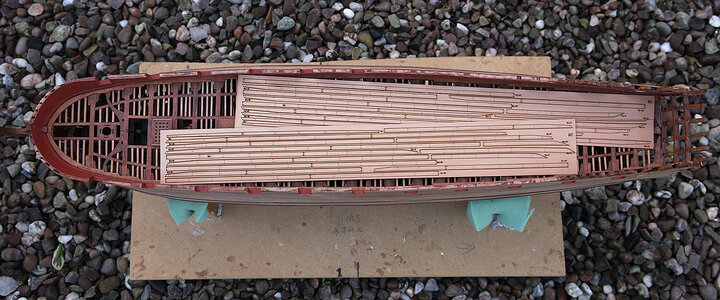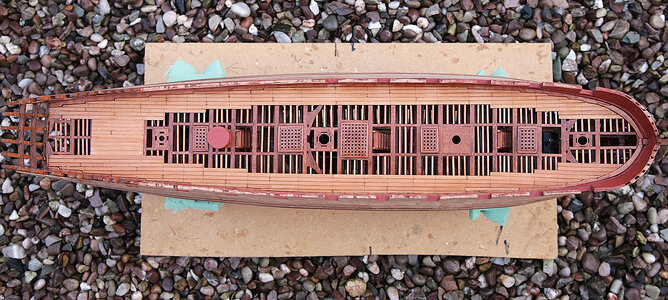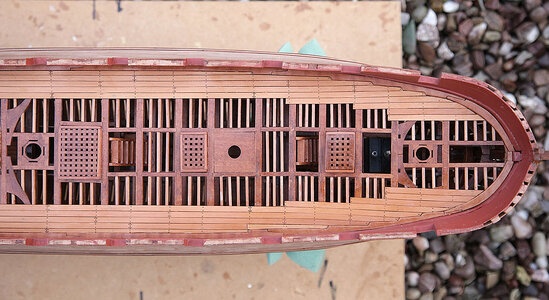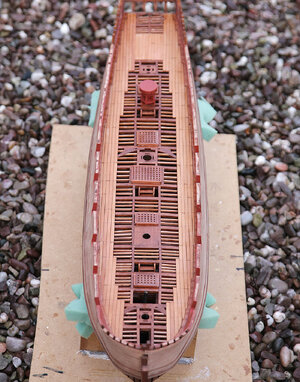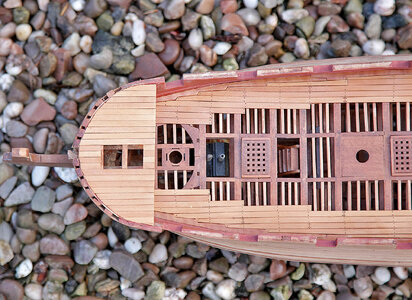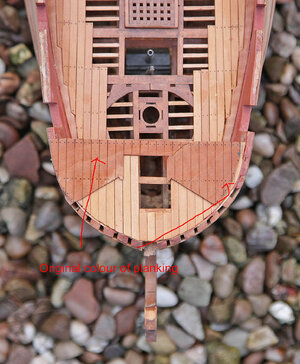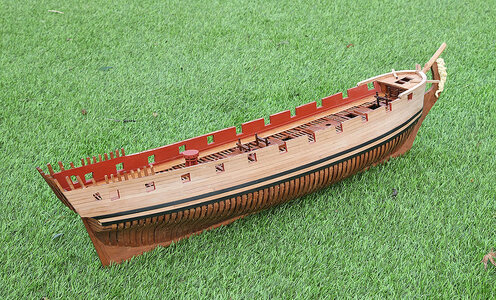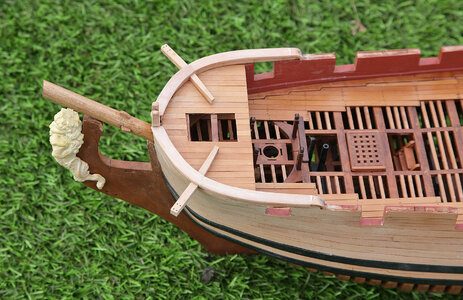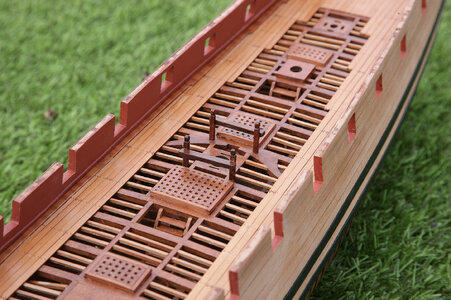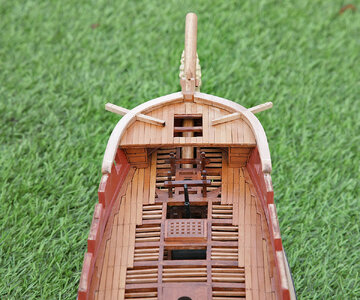Hello and thanks for being here. Today I’ll bring you bang up to date, some of the photos I took this morning.
Things I’ve done, I fitted the forecastle beams, and its deck as well as the bulkhead. The deck was a pre made piece with etched planking, it fitted well but it seemed a different textured pear from the other planking and when after fitting and oiled it turned a muddy brown colour, completely at odds with the other planking. It was so bad that I ripped it out, cut new planks from scrap and re made the deck, when oiled they matched the deck planking perfectly, a redo worth the effort. I made up the raised bow part and fitted the capping, a surprising amount of work doing this, fourteen parts alone. I made cut outs for the davits which are shown dry fitted, I re-made the knights head for a better fit and prepared the stub bowsprit. The Lion figurehead didn’t fit the prow which was too wide, others have tapered the prow but I didn’t trust myself to do that neatly, instead I widened the recess in the lion by about a mm. each side, it then slid over the prow nicely without any sign that it had been altered. I have painted the wales, it’s probably a bit early in the build to do this but I just wanted it to look nice on my bench. Finally I made up and fitted the bitts, these were a bit awkward as they were made to pass through the upper deck and then fixed to the lower deck, I don’t see how this could have been done unless they had been built into the beam yokes when they were being made up, I adapted the supplied ones and unless you looked closely you wouldn’t know. That’s it, a lot of work done and now that some of the detailing has been done I think it’s starting to look pretty good, to me anyway.
View attachment 414173
View attachment 414174
View attachment 414175
View attachment 414177
View attachment 414180
View attachment 414178




